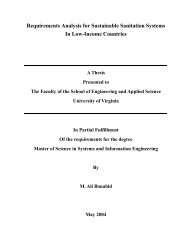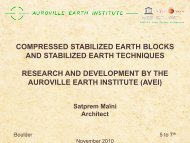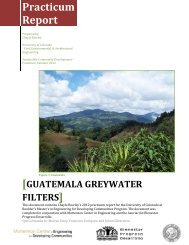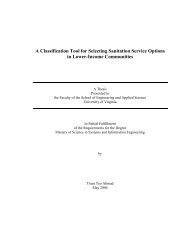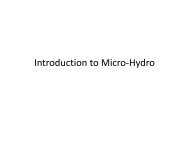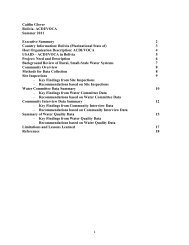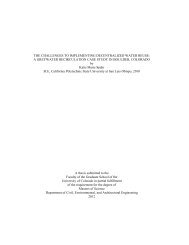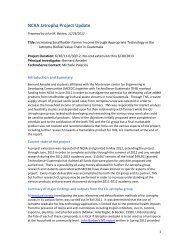SCEBs - University of Colorado Boulder
SCEBs - University of Colorado Boulder
SCEBs - University of Colorado Boulder
You also want an ePaper? Increase the reach of your titles
YUMPU automatically turns print PDFs into web optimized ePapers that Google loves.
limit for clay (Craig, 2005; ASTM D422). However, as nearly every source cited<br />
acknowledges, clay particles are more correctly identified by their physical and chemical<br />
structure. Methods for accurately identifying the chemical composition <strong>of</strong> fine-grained<br />
soils involve highly sophisticated and expensive techniques, such as electron microscope<br />
or X-ray diffraction analysis (Coduto, 1999).<br />
Determining the exact proportions <strong>of</strong> clay and silt in a soil sample may be <strong>of</strong> less<br />
importance than the behavior <strong>of</strong> the soil in response to changes in moisture content or the<br />
plasticity <strong>of</strong> the soil. Swedish scientist Albert Atterberg (1846-1916), developed a series<br />
<strong>of</strong> tests that were refined by Karl Terzaghi and Arthur Casagrande in the 1930s. The tests<br />
were designed to evaluate the relationship between a soil‟s moisture content and its<br />
consistency. Common in geotechnical engineering applications, these tests are known<br />
today as the Atterberg limits test. They define a soil‟s liquid and plastic limits.<br />
Explained in further detail in Chapter 3, the results from the Atterberg limit test provide<br />
information regarding a soil‟s plasticity and therefore knowledge <strong>of</strong> the clay content<br />
present. Unlike soils derived from silt, sand, or gravel, clay has experienced extensive<br />
chemical weathering and therefore its engineering properties and behavior are also both<br />
different from other soils (Coduto, 1999).<br />
2.3. Standardization <strong>of</strong> Methods and Techniques<br />
Many methods and techniques have been proposed in the literature for identifying<br />
suitable soils for SCEB production. A good portion <strong>of</strong> these methods are intended to be<br />
quick with easy field tests but require some experience and knowledge <strong>of</strong> similar soil<br />
materials. Several authors (Minke, 2006; Hallock, [no date]) suggest as preliminary<br />
investigation the following tests: the smell test, nibble test, wash test, cutting test,<br />
10



